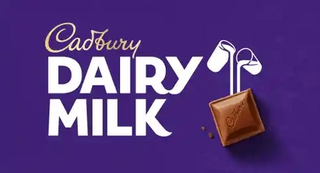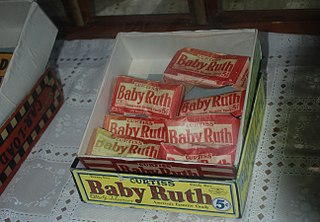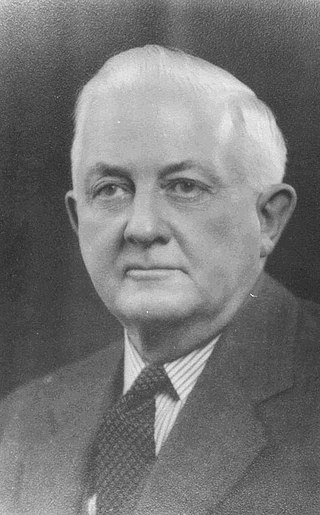Related Research Articles

Cadbury, formerly Cadbury's and Cadbury Schweppes, is a British multinational confectionery company owned by Mondelez International since 2010. It is the second-largest confectionery brand in the world, after Mars. Cadbury is internationally headquartered in Greater London, and operates in more than 50 countries worldwide. It is known for its Dairy Milk chocolate, the Creme Egg and Roses selection box, and many other confectionery products. One of the best-known British brands, in 2013 The Daily Telegraph named Cadbury among Britain's most successful exports.

The Hershey Company, often called just Hershey or Hershey's, is an American multinational confectionery company headquartered in Hershey, Pennsylvania, United States, which is also home to Hersheypark and Hershey's Chocolate World. The Hershey Company is one of the largest chocolate manufacturers in the world; it also manufactures baked products, such as cookies and cakes, and sells beverages like milkshakes, as well as other products. The Hershey Company was founded by Milton S. Hershey in 1894 as the Hershey Chocolate Company, originally established as a subsidiary of his Lancaster Caramel Company. The Hershey Trust Company owns a minority stake but retains a majority of the voting power within the company.
Yoo-hoo is an American brand of chocolate-flavored beverage that was created by Natale Olivieri in Garfield, New Jersey, in 1928 and is currently manufactured by Keurig Dr Pepper. As of 2019, the drink is primarily made from water, high-fructose corn syrup and whey.

York Peppermint Pattie is an American dark chocolate enrobed peppermint confection introduced in 1940 and currently produced by the Hershey Company.

Bounty is a coconut-filled, chocolate-enrobed candy bar manufactured by Mars, Incorporated, introduced in 1951 in the United Kingdom and Canada. It is a direct emulation of the Mounds bar introduced by Peter Paul in 1936, and also copies the milk chocolate enrobing of Hershey's Almond Joy, introduced in 1948. It is no longer domestically sold within the United States, only being available via import sales.

Cadbury Dairy Milk is a British brand of milk chocolate manufactured by Cadbury. It was introduced in the United Kingdom in June 1905 and now consists of a number of products. Every product in the Dairy Milk line is made with exclusively milk chocolate. In 1928, Cadbury's introduced the "glass and a half" slogan to accompany the Dairy Milk chocolate bar, to advertise the bar's higher milk content.

Reese's Pieces are a peanut butter candy manufactured by The Hershey Company; they are oblate spheroid in shape and covered in candy shells that are colored yellow, orange, or brown. They can be purchased in plastic packets, cardboard boxes, or cup-shaped travel containers. The Reese company was founded by H.B. Reese. The H.B. Reese Candy Company was merged with The Hershey Company in 1963.

The Curtiss Candy Company is a defunct American confectionery brand and a former company based in Chicago, Illinois. It was founded in 1916 by Otto Schnering near Chicago, Illinois. Wanting a more "American-sounding" name, Schnering named his company using his mother's maiden name.

Reese's Peanut Butter Cups are an American candy by the Hershey Company consisting of a peanut butter filling encased in chocolate. They were created on November 15, 1928, by H. B. Reese, a former dairy farmer and shipping foreman for Milton S. Hershey. Reese was let go from his job with Hershey when the Round Barn which he managed was shut down for cost-saving measures. He subsequently decided to start his own candy business. Reese's are a top-selling candy brand worldwide, with more than $2 billion in annual sales.

Almond Joy is a candy bar manufactured by The Hershey Company, consisting of sweetened, shredded coconut topped with whole almonds and covered in chocolate. The company also produces Mounds bars, a similar confection with coconut instead of nuts, coated in dark chocolate.
The 5th Avenue is a candy bar introduced in 1936, consisting of peanut butter crunch layers enrobed in chocolate. It is currently produced and marketed by The Hershey Company.

Mounds is a candy bar made by The Hershey Company, consisting of shredded, sweetened coconut coated in dark chocolate. The company also produces the Almond Joy, a similar bar topped by whole almonds and covered in milk chocolate. The two products share common packaging and logo design, with Mounds using a red color scheme and Almond Joy blue.

Harry Burnett Reese was an American inventor and businessman known for creating the number one-selling candy brand in the United States; Reese's Peanut Butter Cups, and founding the H. B. Reese Candy Company. In 2009, he was posthumously inducted into the Candy Hall of Fame.

Swoops were a chocolate candy manufactured by The Hershey Company. They were produced in the following flavors: Hershey's Milk Chocolate, Reese's Peanut Butter, Almond Joy, York Peppermint Pattie, White Chocolate Reeses, and Toffee and Almond. Limited edition varieties included White Chocolate Peppermint, Special Dark with Almonds, and Strawberries & Creme. They were introduced into the market in 2003 and discontinued in August 2006. According to a market research study of April 2004 only 14% of the customers knew Swoops.
Peter Paul Halajian was a candy manufacturer in the New Haven, Connecticut, area in the early 20th century. Born Peter Halajian in the Ottoman Empire, he immigrated to the U.S. in 1890 and worked in a rubber factory, opening a candy shop on February 1, 1895, in Naugatuck, Connecticut, and changing his surname to Paul. After selling chocolate bars to the U.S. Army for use by soldiers in World War I, who demanded them when they came home, he teamed with five other Armenian investors – his brother-in-law Cal Kazanjian, Cal's cousin Artin Kazanjian, chemist George Shamlian, Jacob Chouljian and his cousin Jacob Hagopian – to form the Peter Paul Candy Manufacturing Company on Webster Street in New Haven in 1919 with $6,000. The company at first sold various brands of candies, including the Mounds bar, but following sugar and coconut shortages in World War II, they dropped most brands and concentrated on the Mounds bar, with the U.S. military purchasing as much as 80% of their output by 1944, packing 5 million candy bars monthly into combat rations. The Almond Joy bar was introduced in 1946. In 1978 Peter Paul merged with Cadbury-Schweppes.

A candy bar is a type of candy that is in the shape of a bar. The most common type of candy bar is the chocolate bar, including both bars made of solid chocolate and combination candy bars, which are candy bars that combine chocolate with other ingredients, such as nuts, caramel, nougat, or wafers.
References
- 1 2 3 4 5 6 7 Peter Paul's Path to Sweet Success Connecticut Explored.
- 1 2 ALMOND JOY candy bar, The Hershey Company, Accessed January 15, 2009.
- ↑ "indescribably delicious".
- ↑ "Peter Paul's "No Jelly" – an oddly-named offering from the 70's". 29 November 2012.
- ↑ "Peter Paul Cadbury Inc. said Wednesday it will close its Frankfurt, Ind., manufacturing plant in November". United Press International . Retrieved 17 November 2021.
The firm produces and markets candy bars, including Powerhouse, Mounds and Almond Joy labels.
- ↑ York Peppermint Pattie Archived 2007-08-07 at the Wayback Machine , The Hershey Company, Accessed January 15, 2009.
- ↑ Waldbillig, Larry (30 June 2016). "History's Dumpster: Caravelle Candy Bars". History's Dumpster. Retrieved 5 May 2022.